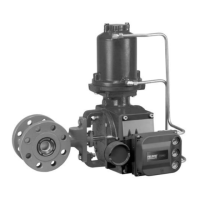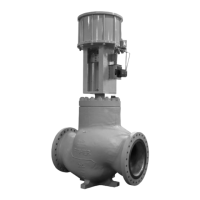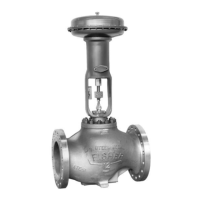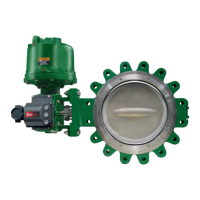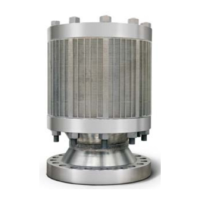Instruction Manual
D101957X012
V150 and V300 Valves
February 2011
16
D Using a pry bar, insert the bar between the ball ear and the follower shaft side of the valve body. Move the ball
tightly towards the packing box side of the valve body, and against the bearing flange or thrust washer. The ball
should be centered within the seal cavity.
D Again, insert the bar between the ball ear and the follower shaft side of the valve body. While holding the ball in
place, tighten the packing box nuts (key 20).
If the ball is not held in place while tightening the packing box nuts, the ball will move to an off‐center position.
6. Welding the pins (key 7):
Note
When welding the pins to the ball ears, use a compatible filler rod material. For CG8M (317 stainless steel) balls use a 309 or 309L
filler rod.
Tack weld both pins (key 7) to the ball ears with a 10 mm (3/8‐inch) diameter weld. (Note: Good weld penetration is
required on both the pin and ball ear.)
7. Tighten the bottom flange nuts using the following torque values: For NPS 14 valves, 102 NSm (75 lbfSft); for NPS
16 valves, 141 NSm (104 lbfSft); and for NPS 20 valves, 176 NSm (130 lbfSft).
8. Lift the valve and place it with the outlet flange face flat on the protected working surface. Use the lever from the
actuator, or provide some other safe method to rotate the ball into the closed position. The inlet flange face should
be up to allow the installation of the ball seal. The ball should be centered within the valve opening.
9. Refer to the Ball Seal Replacement procedures to install the ball seal and seal protector ring.
Actuator Mounting
Standard flow direction is with the seal protector ring (key 3) facing upstream. Install the valve with the drive shaft
horizontal and the ball closing in the downward direction (see figure 8).
WARNING
The Vee‐ball (key 2, figure 10) closes with a cutting motion. To avoid personal injury, keep hands, tools, and other objects
away from the ball while stroking the valve.
Actuator travel must be adjusted before installing the valve in the pipeline because it is not possible to accurately
determine the closed position once the valve is in the line.
The actuator can be right or left‐hand mounted in any of four positions as shown in figure 8.
Note
Right‐hand mounting—Actuator is on the right side of the valve when viewed from the valve inlet.
Left‐hand mounting—Actuator is on the left side of the valve when viewed from the valve inlet.
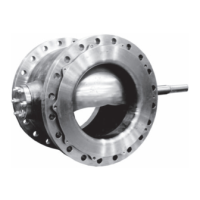
